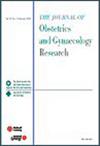The application value of routine office hysteroscopy prior in patients with one embryo transferred failure and normal transvaginal ultrasound
Abstract
Aim
The aim of our study was to investigate whether outpatient hysteroscopy performed in the month before starting an embryo transfer cycle in women who had experienced one failed in vitro fertilization treatment cycle could improve the treatment outcome.
Methods
This retrospective analysis selected the patients who were failures after the first embryo transfer of good-quality embryos between January 2019 to February 2023; the women did not undergo hysteroscopy before IVF, and ultrasound did not observe the pathological abnormalities. A total of 199 patients were included for analysis, 119 females in the hysteroscopic group and 80 females in the controlled group. Women in the study group underwent hysteroscopic examination 3–7 days of the clean menstrual period.
Results
There was no statistically significant difference between the groups for demographic features and hysteroscopy cycle characteristics. The logistic regression analysis showed that performing hysteroscopy prior to patients who had one embryo transferred failure and normal transvaginal scan findings was not an influencing factor for live birth rate.
Conclusions
Performing diagnostic hysteroscopy in patients who had one embryo transfer failure and normal transvaginal scan findings did not improve fertility outcomes. Hence, routine usage of hysteroscopy should not be offered to patients who had one embryo transfer failure and without previously detected pathology of the uterine cavity.

 求助内容:
求助内容: 应助结果提醒方式:
应助结果提醒方式:


